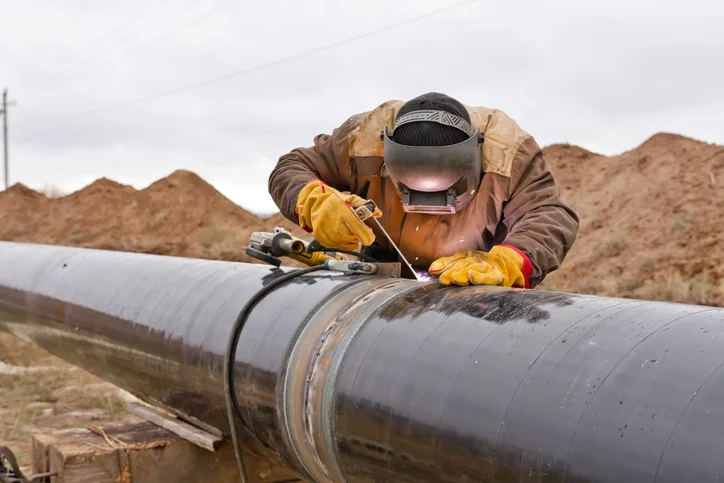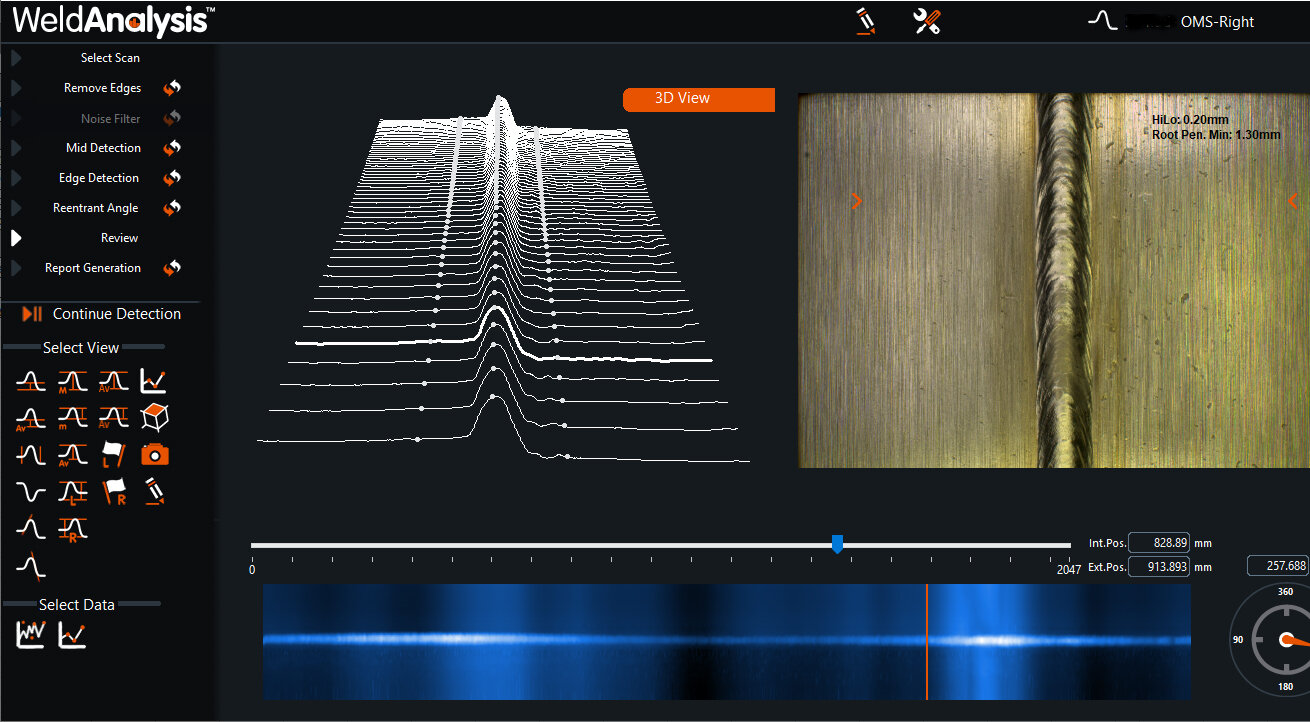Why Pipeline Welding Inspection is Vital for Long-Term Pipeline Safety And Security
Advanced Methods in Pipe Welding Examination: Technologies and Technologies for Boosted Precision and Reliability in Weld Analysis
The landscape of pipe welding inspection is undergoing a substantial makeover, driven by advanced strategies that guarantee to enhance both accuracy and dependability in weld assessments. Technologies such as computerized assessment systems and progressed imaging modern technologies are redefining conventional practices, while non-destructive testing methods make sure material stability is preserved.

Relevance of Weld Assessment
Making certain the honesty of pipeline welds is essential to the general safety and security and integrity of commercial systems. Strenuous evaluation of welds is integral to the lifecycle of pipe framework.
The significance of weld examination extends past simple conformity with regulative criteria. It functions as a proactive step to identify and remedy flaws, such as incomplete fusion, porosity, or splits, before they escalate right into significant concerns. Efficient examination strategies also contribute to the durability of pipelines, lowering maintenance prices and improving operational performance.
Furthermore, comprehensive weld inspections foster count on among stakeholders, consisting of regulative bodies, investors, and the neighborhoods served by these pipes. By guaranteeing that all welds fulfill the needed standards, companies can reduce risks and support their online reputations. In recap, weld examination is essential not just for functional integrity but additionally for the more comprehensive effects it holds for safety and security and ecological stewardship.
Automated Examination Systems
The integration of automatic evaluation systems in pipeline welding has actually revolutionized the method to guaranteeing weld top quality and integrity. These systems utilize innovative robotics and artificial knowledge to perform evaluations that are not just much faster but likewise extra consistent than standard methods. Automated systems can cover substantial sizes of pipes effectively, recording data that human examiners may neglect because of exhaustion or environmental conditions.
One of the crucial advantages of automatic inspection systems is their capacity to operate in dangerous settings, reducing the risk to human inspectors. They use various non-destructive screening (NDT) strategies, such as ultrasonic screening and magnetic particle assessment, to assess weld honesty without endangering the structure. The data collected is processed in real-time, enabling immediate responses and prompt rehabilitative activities when defects are determined.
Furthermore, automated systems promote the standardization of assessment procedures, making sure that each weld is assessed against consistent criteria. This not only improves the dependability of results but also streamlines conformity with governing requirements. As sectors continue to prioritize safety and functional effectiveness, the role of automated assessment systems in pipe welding will unquestionably expand, paving the way for extra innovative quality control techniques.
Advanced Imaging Technologies
Often utilized in modern pipeline welding inspections, advanced imaging technologies have actually considerably improved the capability to find and examine weld problems. Strategies such as digital radiography, calculated tomography, and thermographic imaging offer inspectors with high-resolution pictures that reveal sub-surface problems and structural incongruities that might be undetectable to the nude eye.
This leads to faster inspections and improved accuracy in determining vital issues. Computed tomography, on the other hand, uses three-dimensional imaging, enabling inspectors to imagine complicated geometries and assess the stability of welds from several angles.
Thermographic imaging utilizes infrared innovation to detect variants in temperature level, determining locations of possible weak point or stress and anxiety within the weld. These innovative imaging technologies not only improve problem detection rates however likewise reduce the time and sources needed for pipe inspections. As an outcome, they play a vital function in preserving pipeline safety and reliability, ensuring compliance with sector standards while reducing operational threats.
Non-Destructive Examining Approaches
Making use of numerous methods, non-destructive testing (NDT) methods are vital in pipeline welding assessments, enabling for the assessment of weld integrity without compromising the product's structural integrity. pop over here NDT incorporates a series of approaches, including ultrasonic testing (UT), radiographic testing (RT), magnetic fragment testing (MT), and color penetrant screening (PT) Each method has distinct benefits and applications depending upon the particular requirements of the inspection.
Ultrasonic testing makes use of high-frequency audio waves to find interior defects, giving precise measurements of weld density and integrity. Pipeline Welding Inspection. Radiographic testing employs X-rays or gamma rays to create photos of the weld, disclosing interior defects that might not show up externally. Magnetic fragment testing is reliable for discovering surface and near-surface discontinuities in ferromagnetic products, while color penetrant testing highlights surface area fractures by utilizing a tinted dye
Incorporating these NDT techniques right into pipeline welding assessments enhances the accuracy and integrity of weld evaluations, ensuring that prospective failings are identified early. As sectors demand higher requirements for security and performance, the role of NDT in preserving the honesty of bonded structures continues to be pivotal in pipeline building and construction and upkeep.

Future Fads in Weld Analysis
As we seek to the future of weld analysis, improvements in modern technology are poised to revolutionize the methods used for examining pipeline honesty. The integration of expert system (AI) and equipment learning in evaluation procedures is anticipated to improve the precision of defect discovery and anticipating maintenance. These innovations permit real-time information evaluation, enabling assessors to determine possible issues prior to they intensify into significant problems.
In addition, using drones equipped with sophisticated imaging systems is obtaining traction. These aerial inspections can cover huge locations rapidly, catching high-resolution photos and data that can be discover here assessed for flaws in hard-to-reach places. This not only improves security yet also raises performance in the inspection process.
In addition, the development of smart sensors embedded in pipeline systems provides the capacity for constant tracking. These sensors can find adjustments in stress, temperature level, and resonances, providing useful understandings into the wellness of the welds over time.

Final Thought
In conclusion, the integration of sophisticated strategies in pipe welding inspection significantly boosts the precision and integrity of weld analyses. Advancements such as computerized assessment systems, advanced imaging technologies, and non-destructive testing approaches play a critical role in boosting issue discovery rates and cultivating proactive maintenance strategies. check it out As these innovations remain to develop, they will certainly better guarantee the safety and performance of pipeline systems, ultimately adding to the honesty of important facilities.
